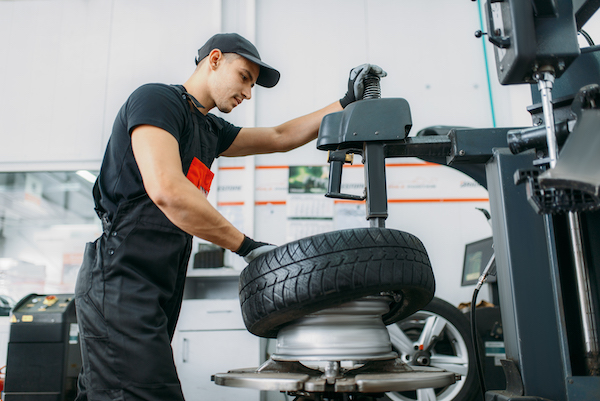Tire Service: Understanding Tire Pressure Tracking Equipments
Understanding Tire Pressure Tracking Solutions (TPMS) is a critical element of maintaining optimal vehicle performance and safety on the roadway. With advancements in vehicle modern technology, TPMS has ended up being a typical feature in modern-day automobiles, giving real-time information on tire pressure levels.

Value of TPMS
The significance of Tire Pressure Tracking Equipments (TPMS) lies in their ability to improve vehicle security and performance through real-time surveillance of tire pressure degrees. Maintaining the right tire stress is important for making sure optimal handling, braking, and general safety and security of an automobile. TPMS offers motorists with prompt feedback on any underinflated or overinflated tires, permitting timely changes to be made.
Elements of TPMS
Comprising numerous essential aspects, a Tire Pressure Tracking System (TPMS) functions as an innovative safety function in modern vehicles. The major components of a TPMS include sensors, a control component, and a warning indication. Sensors are typically situated in the tire shutoff stem or affixed to the wheel assembly, where they determine tire pressure and transfer data to the control module. The control module procedures this details and causes a warning if it discovers dramatically reduced stress in any of the tires. The caution sign, frequently a sign on the dashboard, informs the motorist to inspect the afflicted tire or tires. Some advanced TPMS designs likewise display the actual tire pressure readings for every tire, providing motorists with real-time info to make sure optimal tire efficiency and safety and security. By checking tire stress constantly, TPMS aids protect against mishaps, lowers tire wear, and boosts gas effectiveness, making it an important part for lorry security and performance.
Kinds Of TPMS

On the various other hand, indirect TPMS counts on the lorry's wheel rate sensing units to monitor tire pressure. This system discovers underinflation by comparing the rotational speeds of the wheels. Indirect TPMS is much less costly than straight TPMS, as it utilizes existing sensors within the car.
While straight TPMS supplies extra exact analyses, indirect TPMS is less complex in design and normally needs less maintenance. Both systems have their limitations and advantages, and the option in between them often depends on factors such as price, lorry make, and individual choice. Recognizing the distinctions between these 2 kinds of TPMS can aid automobile owners make informed decisions regarding tire upkeep and security.
TPMS Maintenance Tips
Reliable upkeep of TPMS is essential for making certain ideal efficiency and safety of your automobile. Regularly evaluating the TPMS sensors for any kind of damage or deterioration is crucial. Make sure that the sensors are tidy and cost-free from particles that could hinder find here their performance. Furthermore, it is a good idea to check the sensing unit batteries occasionally and replace them as required to guarantee exact readings. Conduct regular checks on the tire stress degrees and contrast them with the TPMS readings to guarantee they are consistent. Rectify the system complying with the maker's standards if there are any kind of inconsistencies. Moreover, during tire turning or substitute, make sure that the TPMS parts are managed thoroughly to avoid any type of prospective damages. If the TPMS cautioning light illuminates on the dashboard, address the problem immediately by examining the tire pressures and the total system for any type of faults. By adhering to these maintenance pointers, you can lengthen the life expectancy of your TPMS and boost the security of your driving experience.
Benefits of Correct Tire Stress
Keeping appropriate tire pressure, as stressed in TPMS Upkeep his response Tips, is important for reaping the many benefits connected with ideal tire stress degrees. Furthermore, correct tire stress guarantees even tire wear, prolonging the lifespan of the tires and promoting safer driving conditions. In conclusion, the advantages of correct tire pressure go beyond just tire durability; they incorporate enhanced gas efficiency, enhanced safety, better car efficiency, and total driving comfort.
Verdict
In final thought, recognizing tire pressure tracking systems (TPMS) is important for preserving optimal tire pressure and making sure lorry safety and security. By acknowledging the importance of TPMS, recognizing with its parts, understanding the different kinds available, adhering to appropriate maintenance suggestions, and understanding the advantages of maintaining appropriate tire pressure, drivers can boost their driving experience and prolong the lifespan of their tires. Correct tire pressure is vital to effective and risk-free lorry operation.
